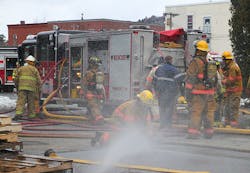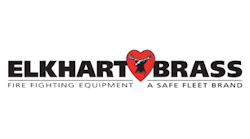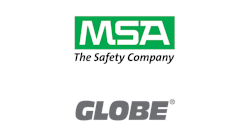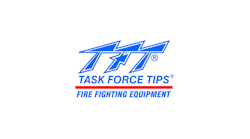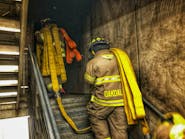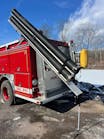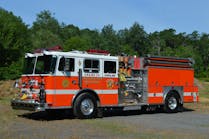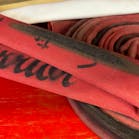In The Market For Stuff? Go Have Some Fun
Buying stuff for fire departments should always be a fun experience and with the right attitude and a reasonable amount of research it can be enjoyable, not a pain in the backside chore.
There’s a lot of stuff needed for proper firefighting responses and there seems to be more each year.
When I was a kid in the ‘60s and ‘70s, and my dad was a fire chief in rural New Hampshire it seemed like firefighting was pretty simple – big red truck, (some that weren’t ripe were lime green) some hose and a nozzle, maybe a cotton jacket, rubber boots, a helmet and as much water as one could draft from the nearby pond was all that was needed. SCBAs were for wimps. Foam was something kids played with in the bath tub. And thermal imaging cameras were science fiction.
But since the dawn of time, fires have pretty much behaved the same way. Sure, there are lots of different types of fuels now, but fires really don’t care what kind of equipment you have. They always go out eventually, either by consuming all the available fuel, or by succumbing to assaults by well-trained, well-equipped firefighters.
The trick is to have enough equipment to halt fire’s advance before it consumes everything in its path. We shouldn’t forget about having the proper levels of good training either, but because this blog is about business and stuff, we can leave that as an absolute threshold point.
And here it is. Don’t fight fires without the proper training -- period. It’s that simple. You could die and kill those around you. That’s basic 101 stuff, but it doesn’t hurt to hear it every once in a while. Having the right equipment too makes it easier, but if you don’t know how to uses it, stuff isn’t much good.
Anyway, our department is looking to buy some stuff -- attack line hose and new nozzles. That’s routine stuff for firefighting and not too complicated – one would think.
We could just call up our local vendor, tell him what color hose we need, have him drop it off and call it good. And that wouldn’t be a bad way to go. It would certainly make life a lot easier and one can be reasonably certain there are minimum standards that all fire hose need to meet and we’d all be satisfied for years to come. Hose is one of those things nobody really thinks about until either there’s not enough of it (they don’t make hose stretchers) or something springs a leak and it obviously needs to be replaced.
This year, however, there’s one more reason to buy hose, age. The National Fire Protection Association (NFPA) Standards 1962, “Standard for the Care Use and Service Testing of Fire Hose Including Couplings and Nozzles,” was revised. The new standards say fire departments should discard any hose that’s 25 years or older no matter the condition.
The NFPA standard has always required hose to be inspected thoroughly and tested annually. I suspect there are many departments, especially low-volume, rural volunteer fire departments that don’t routinely test hose. It’s just one of those things. It doesn’t take much, but finding the staff and time to do it is another thing.
Like many departments, ours has a mix of hoses on different apparatus and stashed away in junk (errr..) supply closets.
And a lot of it is old.
So, we’ve done our homework, checked with vendors and decided to buy hose made right here in New Hampshire. We’ve ordered JAFLINE, a synthetic, double-jacketed fire hose made by Armored Textiles, Inc. (ATI), in Peterborough, N.H.
New Hampshire has a couple of really well known manufacturers of fire service products, ATI is one and Globe Manufacturing, the maker of personal protective equipment (PPE) is headquartered in Pittsfield, N.H. Showing no bias here, but that’s what we have, Globe gear. And why not. It’s good stuff and it’s made right here.
Now on to the nozzles.
Two years ago at the Fire Department Instructors Conference (FDIC) show in Indianapolis, I was shown a prototype nozzle made by Task Force Tips (TFT). It looked pretty normal – a high-quality nozzle. Then, I was shown what seemed like a magic trick. A detent collar was twisted and the whole front of the nozzle flipped down revealing a smooth bore nozzle kind of inside.
That nozzle is now in full production and TFT is calling it the FlipTip.
The design gives the user the ability to choose between a smooth bore and a combination nozzle with a fog pattern, in both automatic and selectable gallonage configurations.
It’s an ingenious design, one that has the potential to end the struggle between the folks who want a smooth bore and those who want combination nozzles with fixed, selectable, or automatic capabilities.
After seeing the FlipTip at the show, reading a little more about it, we made contact with a local vendor and set up a demonstration date.
At a training exercise, when went to a local river, set up water supply, set up an attack engine and flowed a lot of water. A neighboring department joined in and we had a great evening of flowing water and testing the new nozzle.
The consensus – we want some. The order is on the way.
We have other nozzles too some made by Akron Brass, some made by Elkhart Brass and even a master stream device made by POK of North America Inc. We’re an equal opportunity purchaser. If we need it and it’s good quality, we’re interested in it. The trick is to do you research, learn about the companies with which you do business and make wise decisions.
Firefighters like new stuff, so why not try out new things and new products when they are developed. A lot of fire service manufacturers and suppliers are run by firefighters and even owned by people with fire service backgrounds.
They know what we need and often, the products they develop help them resolve issues and challenges they’ve encountered.
So, when it comes time to buy stuff, go on line, pick up a catalog, go to a show, call your dealer and do your homework.
Then try it out and above all else, have some fun.
